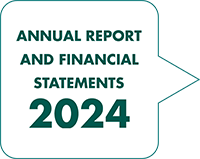
- 120 million people, making it the second-most populous country in Africa
- Great diversity, with over 80 ethnic groups and languages
- One federal government, 12 regional governments, with a high level regional empowerment and decision-making

- Easing inflation – at 26.2% in March 2024
- Liquidity pressure in the market
- 2023 GDP growth expected at 6.0%

- Revised mobile money limits – daily transaction limit: ETB 75,000
- Proposed 45% privatisation of Ethiotel
- Telecom licence request for quotation (RFQ) issued on 30 June 2023

- Previously in-force social media blockade lifted in July 2023
- Stable security situation in Tigray
- Amhara under state of emergency regulations
Currency stresses
The Ethiopia Birr (ETB) depreciated by 5.0% in FY24 (April 2023 – March 2024) to ETB 56.9. In September 2022, to address the foreign currency shortage, the government implemented several measures intended to improve access to dollars.
The National Bank of Ethiopia (NBE) banned the use of foreign currency in local transactions, while reducing the number of days that a returning resident can keep foreign cash from 90 to 30 days. In addition, the Bank also relaxed restrictions on how much foreign currency can be brought into the country.
USD-ETB exchange rate

![]()
Inflation
Inflation has been one of the most difficult macroeconomic challenges facing Ethiopia over a period of many years, as reflected in the average inflation rate of 16% per year registered over the past decade.
That said, inflation has remained below 30% since June 2023, according to data from the statistics office, with the annual inflation rate declining to 26.2% in March 2024 compared to a high peak of 37.3% in May 2022. In April 2024 food inflation, which accounts for 53.5% of the Consumer Price Index (CPI) remained elevated at 27.0% YoY while non-food inflation was significantly lower at 18.0% YoY compared to 36.1% in April 2023.
The NBE has set targets to reduce inflation to below 20% by June 2024 and below 10% by June 2025, by moderating credit growth and sharply reducing direct advances to the Treasury.
Inflation rate (%)

Source: Ethiopian Statistical Service
Economic growth
In the last three years, the Ethiopian economy has faced multiple shocks including the impact of the COVID-19 pandemic, internal conflict, drought and the effects of the Russia-Ukraine war on commodity prices. GDP growth fell to 6.1% in 2020, from 8.4% in 2019, although it remained above East Africa’s average of 4.7% in 2021 and 4.4% in 2022.
The Ethiopian government expects the county’s economy to grow by 7.9% in the current Ethiopian 2023/2024 fiscal year, which began on 8 July 2023 driven by the peace dividend, rebounding tourism and the prospect of liberalising more sectors. Assuming that no new shock disrupts economic stability, the World Bank projects strong growth of 7% to persist in Ethiopia in 2024–25, supported by increased investment and a recovery in government consumption.
To drive growth, the government is focused on reducing inflation, improving the performance of the agriculture sector while increasing tax revenue and foreign direct investment inflow into the country.
GDP Growth Rate (%)

Source: Bloomberg




